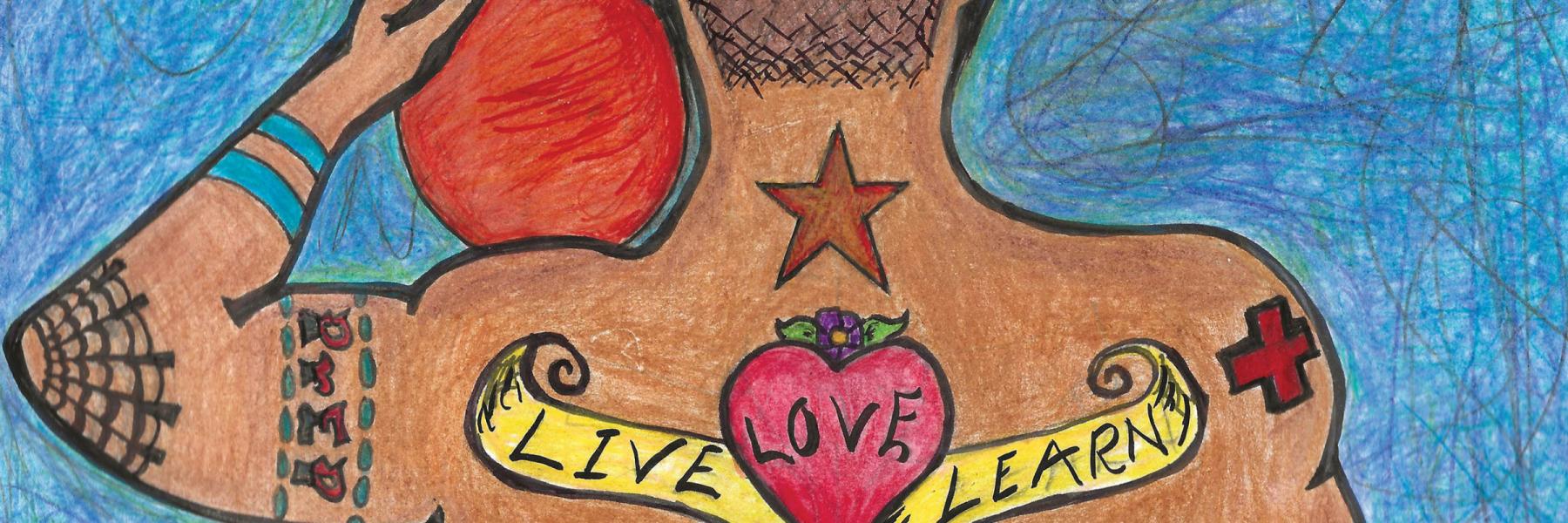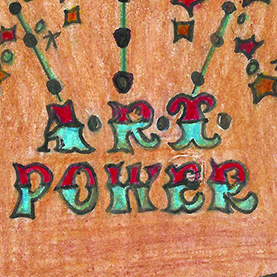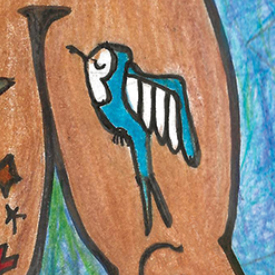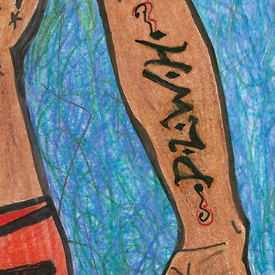About 35,000 people in the United States test positive for HIV each year. That’s a far cry from the peak of 130,000 new cases in 1984. But the day you got your positive test result, it probably didn’t matter if you were one of a kind or one in a million. You may have been scared; you may have been angry; on some level, you may not even have believed it could be true. But whatever you felt, you knew your life was never going to be the same. Well, you know what? You’re right—your life never will be the same. We can’t always choose what happens to us, but we can choose how we respond. And take it from me—someone who, at age 60, has been living with HIV for over 30 years: There’s never been a better time to be living with HIV. Today, treatment for HIV not only keeps you healthy, but also prevents you from passing the virus to sexual partners. So, please sit back and relax, and let me share some information about living with HIV. No, scratch that—let me share some information about living your best life with HIV.
The newly diagnosed HIV two-step
I want to make it super clear that there are two—and only two—things that are absolutely essential for you to do as soon as possible after you receive a positive HIV test result, also called an HIV diagnosis:
- Find a doctor or other medical care provider who specializes in HIV.
- Get on HIV treatment, also called antiretroviral therapy (ART).
Sure, these are not the only two things you need to know about, or to do, in order to live your best life with HIV; but they are the two most essential things that you need to do as soon as humanly possible after you get an HIV diagnosis. Why are these two steps so important, and why is it so important that you do them right away? It’s really pretty simple. You need to have a medical provider to get on treatment, and you need to get on treatment in order to live a long, healthy, happy life with HIV. Let’s take a look at these two steps in reverse order: first, what is treatment and why is it so important; and second, how you find the right doctor or other care provider to prescribe and monitor your HIV treatment.
HIV treatment—What it is and why it matters
As you may know, HIV (human immunodeficiency virus) is the virus that causes AIDS (acquired immune deficiency syndrome). AIDS is a complete and devastating breakdown of the human immune system that leaves a person with AIDS (PWA) unable to fight infections and cancers that are usually no bother to people with normal immune systems. HIV attacks an important part of the immune system called T cells or CD4 cells.
HIV barges into your CD4 cells, hijacks their genetic material (DNA), and uses it to make copies of itself (replication). Once HIV has set up shop in a CD4 cell, it destroys that cell. Over time, the CD4 cell population is severely depleted. That’s what leads to severe immune suppression, which in turn provides an opening for various infections and cancers—known as opportunistic infections and cancers, because they take advantage of the opportunity afforded by the destruction of the immune system.
Ultimately, nobody really dies from HIV itself; rather, it is this onslaught of opportunistic infections and cancers that leads to death if HIV is left untreated.
When AIDS first made the scene in 1981, it appeared in the form of rare infections and cancers among specific groups including gay men and people who injected drugs, as well as among their sexual partners, and among infants born to mothers with HIV (this kind of transmission could take place during pregnancy, delivery, or breast feeding). Nobody knew what was causing this strange outbreak of rare infections and cancers. It wasn’t like COVID-19, for example, where the first four cases of a mysterious new form of pneumonia were identified on December 29, 2019, and the virus that caused the pneumonia was identified nine days later on January 7, 2020 (the virus is called SARS-CoV-2, and the disease is called COVID-19).
By contrast, it took two years after the first known appearance of AIDS for virologists to identify HIV as the cause (1983). It took four more years for pharmacologists to develop the first drug to fight HIV (1987). But while that drug (Retrovir, also known as azithrothymidine, zidovudine, and AZT) slowed the destruction of the immune system, it did not stop it altogether. Not until 1996—15 years into the AIDS epidemic—did researchers come up with combinations of three drugs that would suppress HIV sufficiently to stop the destruction of the immune system.
With this kind of maximally suppressive ART, HIV became a chronic, manageable condition rather than a death sentence. That’s why many people today, especially young people who have come of age in the past 25 years, do not always realize how serious HIV infection can really be. And that is why I need to impress upon you here the very, very, very great importance of getting on ART as soon as possible after your HIV diagnosis. You see, within six months on any one of a number of different treatment options available today, the virus generally becomes undetectable in your circulating blood. This is called viral suppression. Viral suppression is the primary goal of ART. Viral suppression on ART leads to two very important benefits:
- Your immune system is protected from the damaging effects of HIV.
- You can no longer transmit the virus to your sexual partners.
With your immune system protected from the ravages of HIV, you have your health and your life back—barring complications unrelated to HIV, you can now live a normal, healthy life for decades to come.
As I like to put it as a PLWH who often has HIV-negative partners, “My treatment is your prevention.”
Just as important for most people living with HIV (PLWH), viral suppression means you can no longer transmit the virus to your sexual partners. This is now often called “undetectable equals untransmittable,” or U=U. It means you can feel free to meet people, date people, enjoy sex, and even fall in love and enter into long-term relationships, regardless of the HIV status of your partner.
So, again, in case I have not already single, double, triple underlined this enough: It is vitally important that you get on ART as soon as possible after your HIV diagnosis, both for the sake of your own health, and for the protection that viral suppression gives to your sexual partners.
Why you need an HIV doctor or other healthcare provider
In order to get on ART, you need to be in the care of a doctor or other medical provider who knows how to care for PLWH. You may very well feel fine when you are first diagnosed with HIV, because it can take years for untreated HIV to cause the kinds of infections or cancers that can make you ill and threaten your life. Even if you do not feel sick, if you have HIV, the virus is doing damage. But you can prevent that damage by getting on ART. Early treatment has been proven to extend life and good health. That’s why you need to see an HIV medical provider as soon as possible after receiving your HIV diagnosis.
When it comes to choosing your HIV medical provider, experience matters. There is evidence that PLWH who have medical providers with more experience in HIV care tend to do better than those who see a provider who has only limited HIV care experience. As someone who has seen his share of both good and bad HIV care providers, I can confirm—you definitely want a doctor or other medical provider who has experience caring for patients with HIV.
Your HIV care provider may be a medical doctor (MD), an osteopath (DO), a nurse practitioner (NP), or a physician assistant (PA). If your HIV medical provider is an MD, their specialty may be internal medicine (an “internist”) with a subspecialty in infectious diseases (ID). But doctors with other specialties, such as family medicine or OB-GYN, can also be great HIV specialists.
Finding an HIV care provider
If you already have a primary care provider, they may be able to manage your HIV care and treatment. If your primary care provider cannot manage your HIV care, they may be able to refer you to an HIV specialist.
The HIV.gov website includes a page that provides other ways to find an HIV care provider (hiv.gov/hiv-basics/starting-hiv-care/find-a-provider/locate-a-hiv-care-provider). These include calling your state’s toll-free HIV/AIDS hotline (find it at hab.hrsa.gov/get-care/state-hivaids-hotlines), or searching the referral link directory (providers.aahivm.org/referral-link-search) on the American Academy of HIV Medicine website. Finally, if you received an HIV diagnosis by using an HIV home test kit, you were provided with a telephone hotline that provides confidential counseling and can give you a referral to an HIV care provider in your area.
I’m in care and on treatment—now what?
As I stated at the outset, there has never been a better time to be living with HIV. We live in an era when treatment for HIV is very effective, as well as safe, easy to tolerate, and convenient. It’s often just one pill once a day (this is still combination therapy, but all the components of the combination are included in a single tablet). Now there are even injectable drugs that only have to be taken once a month. Soon, this may even become every two months. There are even implantable drug formulations in development that will go under the skin, like some forms of birth control do now, and may be able to provide effective treatment for a year or longer following a single implant. The search for a vaccine to prevent HIV has been long and largely fruitless; but the possibility of a vaccine to treat HIV is just over the horizon, and other antibody-based treatments are also on the way. While a cure for HIV is still years away, it is no longer mere fantasy to talk about a cure—the fundamental scientific underpinnings of one or more different approaches to curing HIV are already in hand.
With all that said, some of the greatest challenges in living with HIV today are not issues of physical health, but rather emotional issues. Those of us living with HIV must still confront stigma, and may often deal with feelings of shame. Shame and stigma interact with what to me is perhaps the most challenging part of living with HIV, namely, issues of intimacy—dating, sex, love, and relationships. I believe this is an area where much has changed in recent years, largely because of two game-changing developments:
- pre-exposure prophylaxis (PrEP)
- treatment as prevention (TasP, the same thing as U=U, as we shall see below).
PrEP and how it has changed life with HIV
As you may know, PrEP is HIV medication you take if you are HIV-negative to protect yourself against acquiring HIV during sex. The first PrEP regimen was approved in the U.S. in 2012. In the early days, PrEP was controversial and often stigmatized, with people on PrEP being viewed as promiscuous or eager to engage in risky sexual activity. The medical literature continues to document PrEP-related stigma today.
According to the CDC, there were about 1.7 million new cases of HIV worldwide in 2018. By comparison, from 2016 to today only about 1 million people have started taking PrEP the world over. The goal set by UNAIDS was to have three million people on PrEP globally by 2020, with a focus on the groups most affected by HIV, including men who have sex with men (MSM), sex workers, and people who inject drugs (PWID). Policymakers hoped that 90% of people in these key populations, as well as 90% of adolescent girls and young women in the hardest-hit regions, would be taking PrEP by now, but these goals are nowhere near met. In the U.S., only 147,000 people initiated PrEP between its approval in 2012 and 2016. By contrast, the CDC estimates that 1.1 million people in the U.S. would benefit from PrEP, including 175,000 women and 780,000 people of color.
Nevertheless, for people who have made PrEP a part of their HIV prevention plan, the impact is profound. A study found that PrEP uptake was significantly associated with declines in HIV diagnoses in the U.S. between 2012 and 2016. On an individual level, PrEP allows people to choose their sexual partners without regard to HIV status. From the perspective of PLWH, PrEP increases the likelihood that a potential sexual partner will feel comfortable exploring sexual intimacy with a person living with HIV. This increased access to a larger pool of potential partners is at least part of the motivation behind some people’s choice to go on PrEP. Of course, PrEP does not protect its users from STIs including gonorrhea, chlamydia, or syphilis. People who use PrEP must continue to evaluate their risk for STIs, and to use condoms if they wish to reduce their risk of acquiring an STI.
How U=U is changing life with HIV
What we now generally call U=U was originally called “treatment as prevention” (TasP) by doctors and other medical providers. By 2010, many experts in the science of HIV realized that ART not only improved the health of PLWH, but also prevented transmission of HIV from PLWH to their HIV-negative sexual partners. As I like to put it as a PLWH who often has HIV-negative partners, “My treatment is your prevention.”
Before the idea of TasP could become widely accepted, evidence was needed from large, randomized clinical studies designed specifically to demonstrate its validity. Four key studies published between 2016 and 2019 have proven definitively that a PLWH who is on ART and whose viral load is undetectable for at least six months cannot transmit HIV to their sexual partners.
In 2016, an advocacy organization called Prevention Access Campaign coined the slogan “undetectable equals untransmittable” and began promoting the U=U message to medical providers, public health agencies, and affected communities.
The U=U message fundamentally changed the way public health policy the world over views ART for HIV. Before U=U, some policymakers saw treatment and prevention as competing interests, especially when considering how to allocate scarce financial resources between these two urgent needs. Once U=U was proven and accepted, treatment itself became a prevention strategy. Financial resources put into treatment were viewed as doing double duty, because treatment and prevention were now known to be one and the same.
On an individual level, PrEP allows people to choose their sexual partners without regard to HIV status.
In addition, the U=U message gave people newly living with HIV additional incentive to get on treatment immediately: Not only would ART protect their health, it would also protect their HIV-negative sexual partners from infection.
Perhaps most important for the quality of life of PLWH, U=U has the potential to reduce the stigma that continues to be associated with HIV. Much of that stigma arises from fear on the part of people who are HIV-negative—fear that PLWH pose a danger to them, especially when it comes to sexual connections within communities with the greatest incidence of HIV.
Getting on with your life
To conclude, my 3-step plan for living your best life with HIV can be summarized as follows:
- Get into the care of an experienced HIV medical provider.
- Get on ART as prescribed by your medical provider.
- Get on with your life.
Becoming HIV-positive is never good news in and of itself. But there is good news about living with HIV in 2021. Today, treatment for HIV not only keeps you healthy, but also prevents you from passing the virus to sexual partners. In addition, as public health agencies and health advocacy organizations spread the U=U message, potential partners are coming to understand that they are at no risk of getting HIV from PLWH who have been undetectable on ART for at least six months.
Moreover, the advent of PrEP has ushered in a generation of people in affected communities who now feel secure in their ability to protect themselves against acquiring HIV, whether they know their partner’s status or not. Together, U=U and PrEP are beginning to chip away at the stigma associated with HIV, particularly the stigma around sex with PLWH in affected communities.
What’s more, while a cure for HIV is still years away, the fundamental scientific knowledge that will underlie any approach to a cure is already in hand.
It’s a good day to live your best life with HIV, and from where we sit right now, it looks like it’s only going to get better.
Michael Broder is a gay, white, poz, Jewish, male, late-Boomer Brooklyn native (b. 1961). Columbia undergrad, MFA in creative writing from NYU, and PhD in classics from the CUNY Graduate Center. He tested HIV-positive in 1990, and started doing AIDS-related journalism while collecting unemployment insurance in 1991. He lives in Bed-Stuy with his husband and several feral backyard cats.





